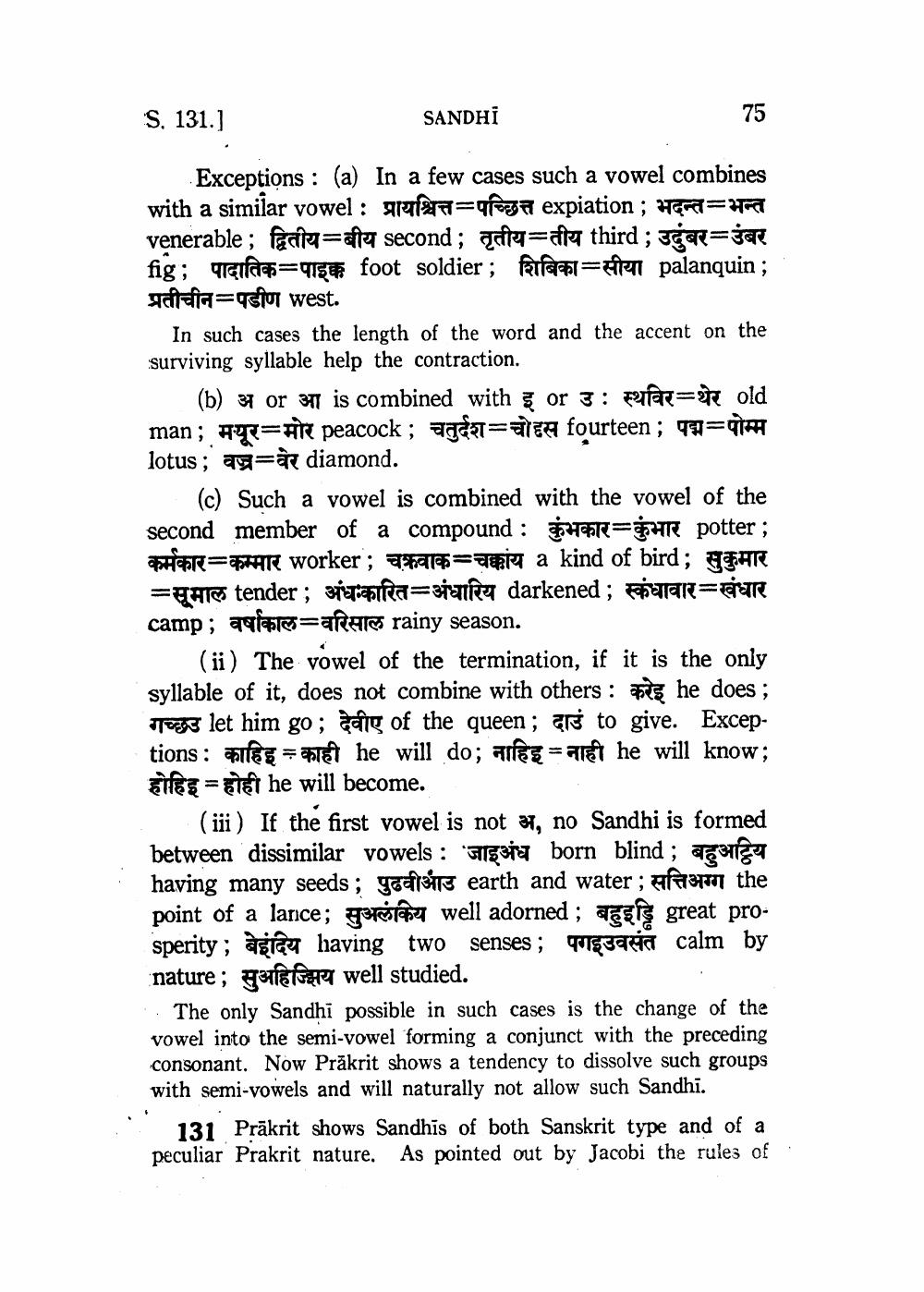________________
S. 131.]
SANDHI
75
Exceptions : (a) In a few cases such a vowel combines with a similar vowel : 9122=rata expiation ; Harrer venerable ; fecurata second; gar=aru third ; cargar fig ; पादातिक=पाइक्क foot soldier ; शिबिका=सीया palanquin; wahaia=rstor west.
In such cases the length of the word and the accent on the surviving syllable help the contraction.
(b) अ or आ is combined with इ or उ : स्थविर=थेर old man; A =#Te peacock ; aget=a fourteen ; 4=TA lotus; agra diamond.
(c) Such a vowel is combined with the vowel of the second member of a compound : कुंभकार=कुंभार potter ; PAR=AHR worker ; 9492=ami a kind of bird; TAR
=This tender ; sifa=sien darkened; pear=Ear camp; वर्षाकाल=वरिसाल rainy season.
(ii) The vowel of the termination, if it is the only syllable of it, does not combine with others : aprile he does ; stesse let him go; gang of the queen ; rs to give. Exceptions : les = net he will do; alfese = are he will know; ETTES = he will become.
(iii) If the first vowel is not 27, no Sandhi is formed between dissimilar vowels : ‘जाइअंध born blind ; बहुअट्रिय having many seeds; पुढवीआउ earth and water ; सत्तिअग्ग the point of a larice; grily well adorned ; geefs great prosperity; asics having two senses ; Tesaria calm by nature; GERT well studied. · The only Sandhi possible in such cases is the change of the vowel into the semi-vowel forming a conjunct with the preceding consonant. Now Prākrit shows a tendency to dissolve such groups with semi-vowels and will naturally not allow such Sandhi.
131 Prākrit shows Sandhīs of both Sanskrit type and of a peculiar Prakrit nature. As pointed out by Jacobi the rules of :




